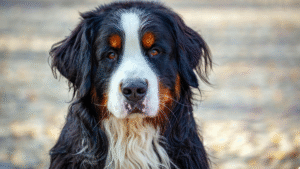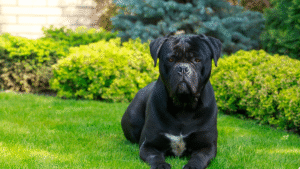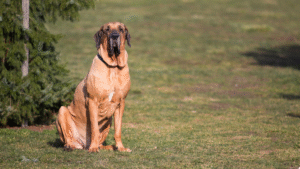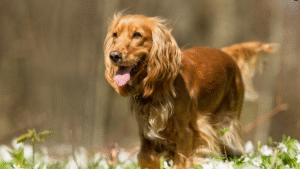If your dog keeps peeing in the house, you’re not alone. Many dog owners struggle with indoor urination issues, whether it’s a new puppy still learning the ropes or an older dog suddenly having accidents.
While it’s frustrating, the good news is that with patience and the right approach, you can stop this behavior for good.
Dogs rarely urinate indoors out of spite. Most of the time, it’s due to incomplete house training, medical conditions, anxiety, or confusion about where they’re supposed to go. Below, we’ll explore six proven ways to stop your dog from peeing in the house and restore peace to your home.

1. Identify the Root Cause of the Problem
Before you can solve the issue, you must first understand why your dog is peeing inside. The solution depends on the cause.
Common Reasons Dogs Pee Indoors:
-
Incomplete potty training: Puppies or newly adopted dogs may not yet know where to go.
-
Medical issues: Urinary tract infections, bladder stones, diabetes, or kidney problems can cause frequent urination.
-
Territorial marking: Male dogs (and sometimes females) may mark spots around the house to claim territory.
-
Anxiety or stress: Loud noises, separation, or environmental changes can trigger stress-related urination.
-
Aging: Senior dogs may develop incontinence or cognitive decline.
If your dog was house-trained and suddenly starts having accidents, schedule a vet check-up to rule out medical causes before assuming it’s behavioral.
2. Reinforce Proper Potty Training Habits
Sometimes, dogs simply need a refresher course in potty training — even adults. Consistency and routine are key.
Training Tips:
-
Establish a predictable schedule: Take your dog out at the same times every day — first thing in the morning, after meals, naps, and before bed.
-
Use a consistent command: Say “Go potty” or “Do your business” each time, so your dog learns to associate the phrase with the action.
-
Reward immediately: Praise or treat your dog the moment they finish peeing outside. Dogs learn best when the reward is instant.
-
Supervise indoors: Keep your dog in sight. If you can’t watch them, use baby gates or a crate to prevent accidents.
-
Limit access: Don’t give too much freedom too soon. Gradually increase their roaming area as they prove reliable.
Avoid punishing your dog after an accident — it doesn’t teach them not to pee inside, but instead makes them fearful. Focus on rewarding good behavior consistently.

3. Clean Accidents the Right Way
Even if you think you’ve cleaned the mess, your dog’s nose might still detect traces of urine — and that scent can invite repeat accidents.
Steps for Effective Cleaning:
-
Blot immediately to absorb as much urine as possible with paper towels or rags.
-
Use an enzymatic cleaner. These break down the proteins in dog urine that cause odor. They’re far more effective than regular household cleaners.
-
Avoid ammonia-based cleaners. Since dog urine naturally contains ammonia, cleaners with it can actually attract your dog back to the same spot.
If your dog has peed repeatedly in one area, deep-cleaning or replacing carpet padding may be necessary. Using a blacklight can help identify hidden stains that still carry odor.
4. Rule Out Health Problems
Sudden or frequent urination indoors is often a sign of an underlying health issue. If your dog has been house-trained for years and starts having accidents, visit your veterinarian immediately.
Possible Health Issues Include:
-
Urinary tract infections (UTIs)
-
Bladder or kidney stones
-
Diabetes
-
Cushing’s disease
-
Hormonal imbalances
-
Incontinence in senior dogs
A simple urine test or blood panel can reveal whether there’s a medical reason behind the behavior. Once treated, many dogs quickly return to normal habits.

5. Manage Anxiety and Behavioral Triggers
Sometimes, indoor urination is emotional rather than physical. Dogs that feel anxious, scared, or overly excited may urinate as a reaction.
How to Help:
-
Keep the environment calm. Reduce exposure to loud noises or stressful situations when possible.
-
Greet calmly. Avoid high-energy greetings that can trigger excitement urination.
-
Provide regular exercise and stimulation. Bored dogs often develop anxiety-related behaviors, including peeing indoors.
-
Avoid punishment. Scolding increases anxiety and can make the problem worse.
-
Try calming aids. Pheromone diffusers, anxiety wraps, or supplements can help nervous dogs feel more relaxed.
For dogs suffering from separation anxiety, crate training, desensitization exercises, and professional behavior therapy can help restore confidence.
Related:7 Ways To Instill Calmness In Your Dog
6. Stop Marking Behavior in Its Tracks
Territorial marking is different from accidental urination. It’s a communication behavior often triggered by new scents, people, or other pets.
Preventing Dog Marking Indoors:
-
Neuter or spay your dog. This reduces hormonal marking behavior in most dogs.
-
Clean marked areas thoroughly. Use enzymatic cleaners to remove the scent completely.
-
Block access. Restrict your dog’s access to previously marked zones.
-
Supervise and redirect. If you catch your dog lifting their leg indoors, interrupt gently and take them outside immediately.
-
Increase engagement. Spend quality time with your dog — attention, exercise, and structure reduce the need to mark territory.
Marking is not disobedience — it’s instinct. Addressing the triggers and providing proper outlets will help eliminate the behavior.

Final Thoughts
Stopping your dog from peeing in the house isn’t about quick fixes — it’s about understanding your dog and working together toward lasting change.
Here’s a quick recap:
-
Identify the cause — medical, behavioral, or training-related.
-
Reinforce good habits with consistent potty training.
-
Clean thoroughly to remove odors that trigger repeats.
-
Consult a vet to rule out health concerns.
-
Manage stress and anxiety.
-
Address marking behavior appropriately.
Most importantly, stay patient. Dogs thrive on consistency, structure, and positive reinforcement. With time, they’ll learn — or relearn — where to go, and you’ll both enjoy a cleaner, happier home.
- 5 Cheap Alternatives To Dog Training Equipment - November 12, 2025
- Homemade Calming Spray To Help Dogs During Training - November 12, 2025
- 7 DIY Dog Training Tools You Can Make From Household Items - November 12, 2025
